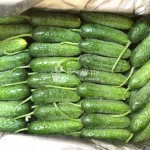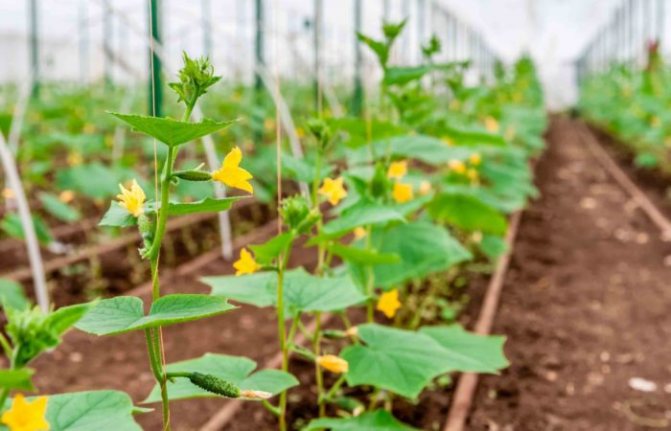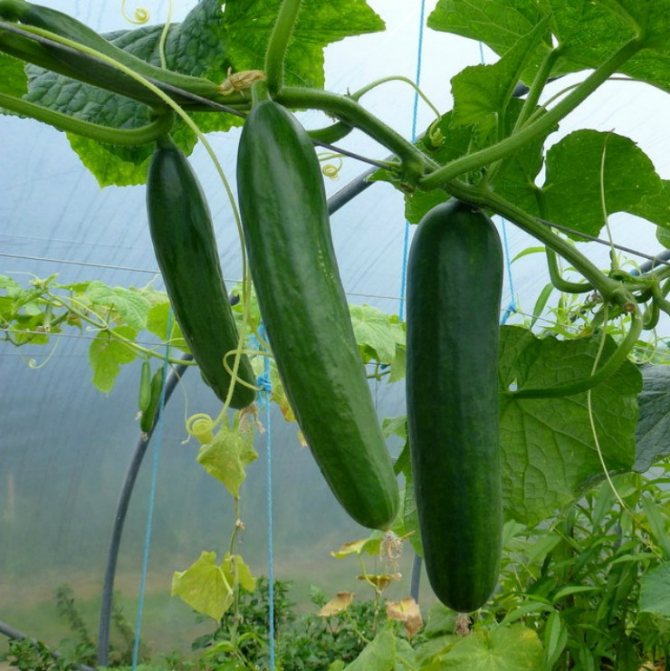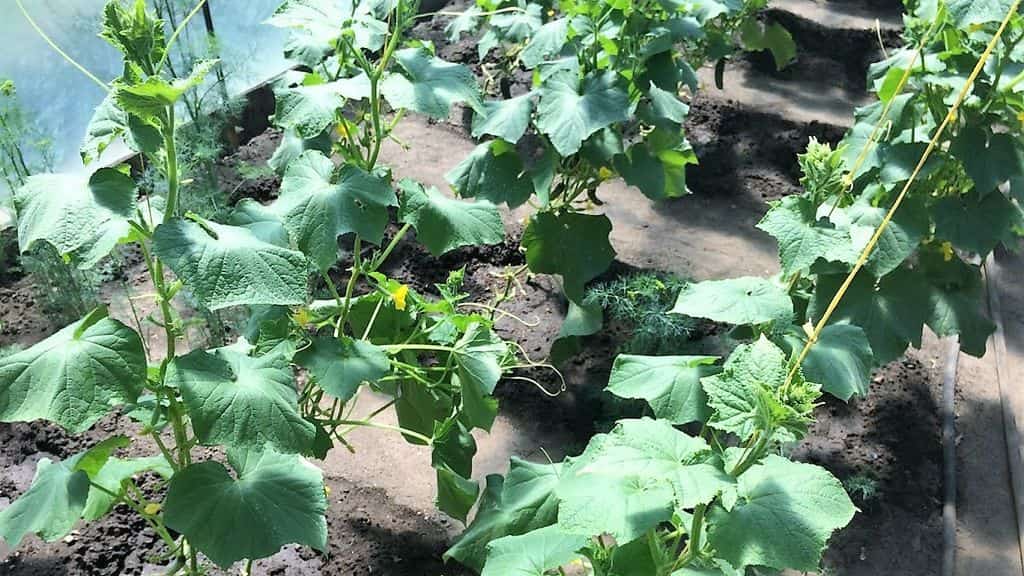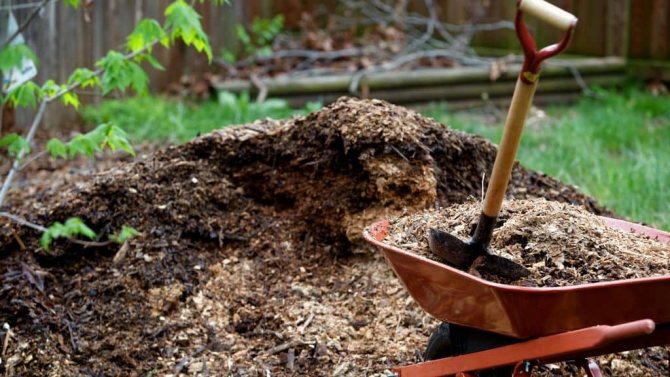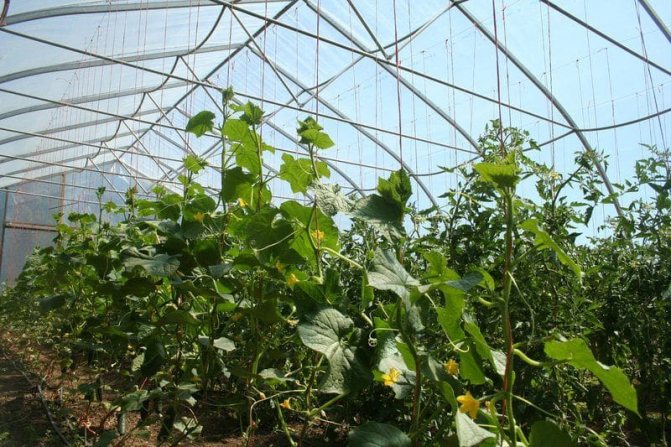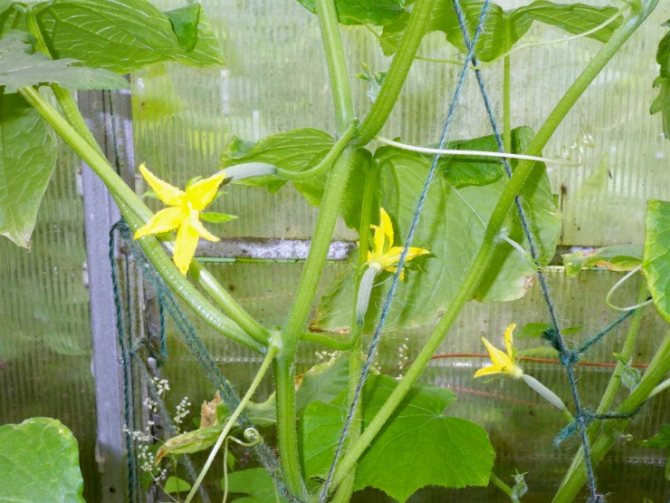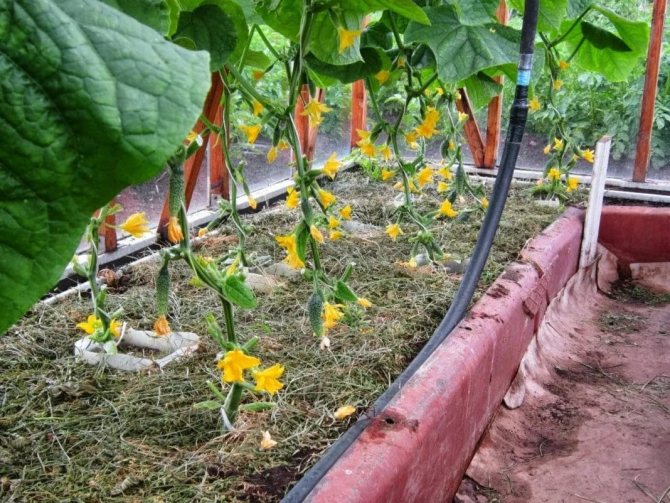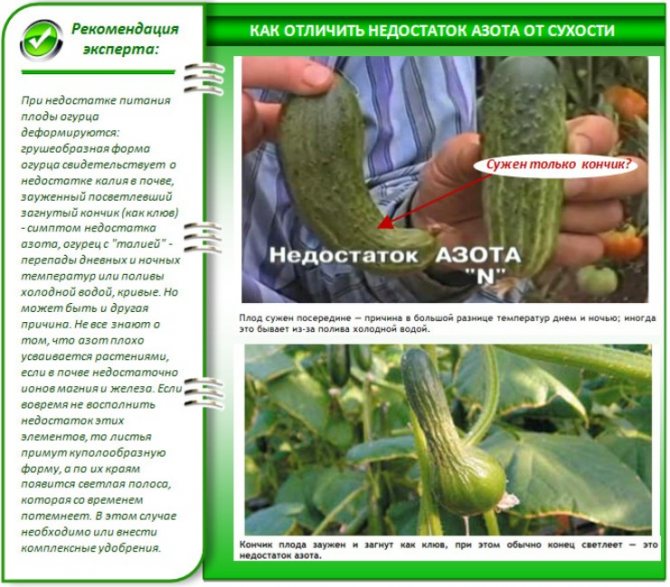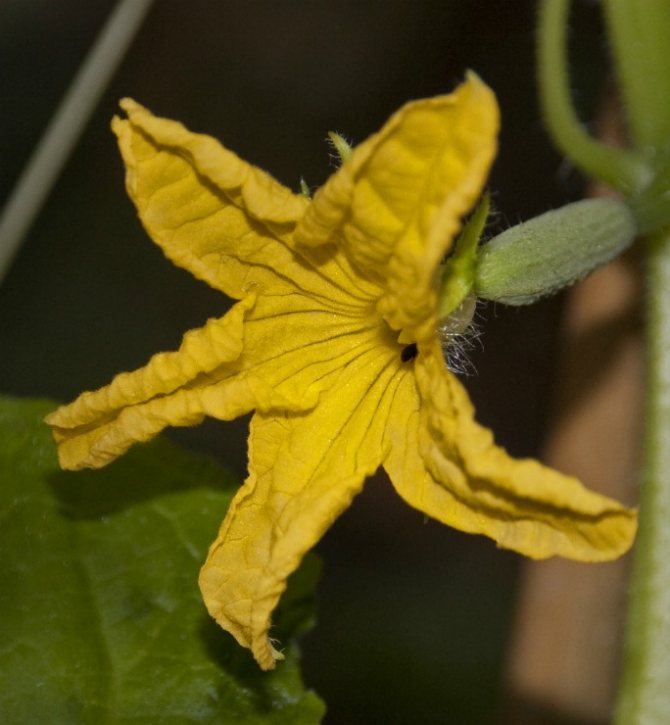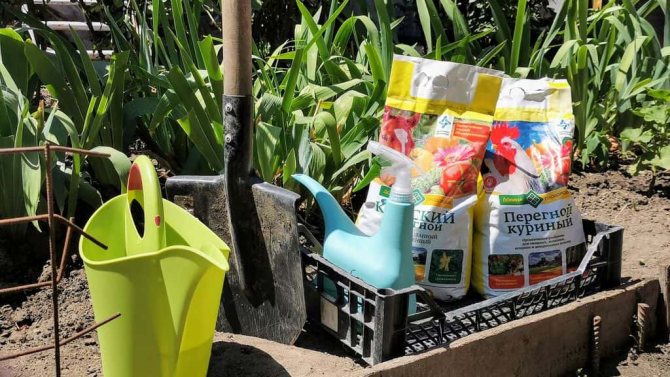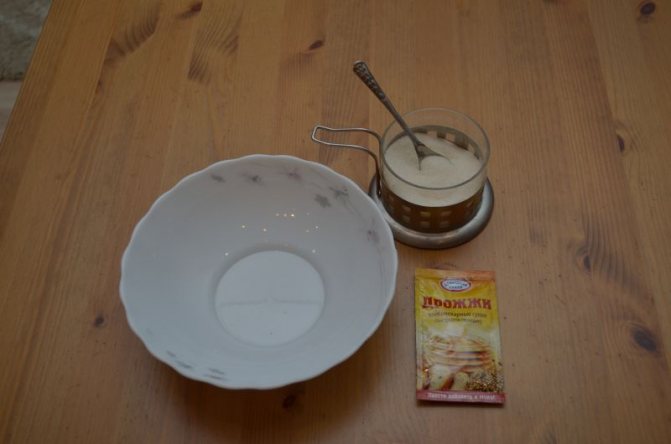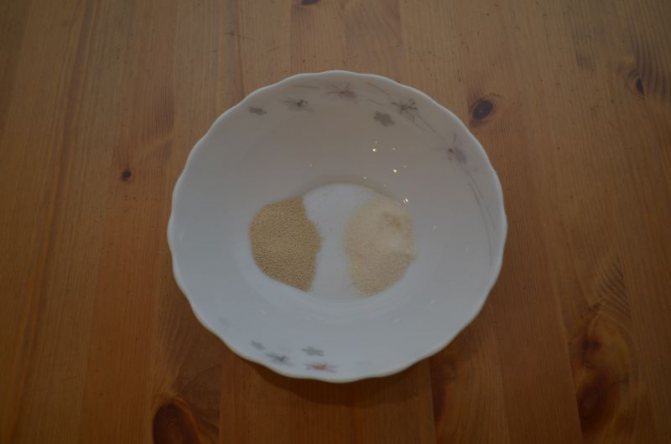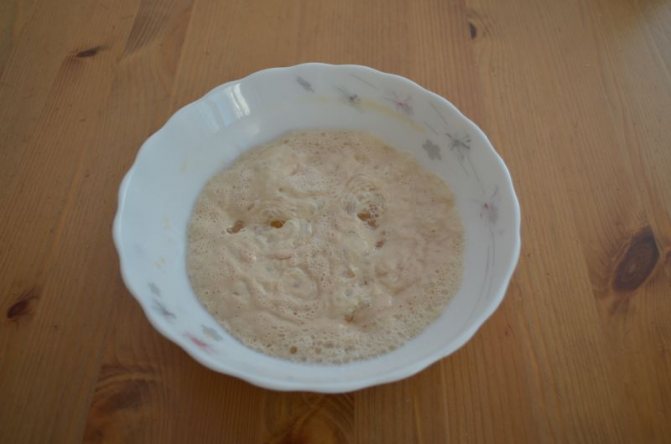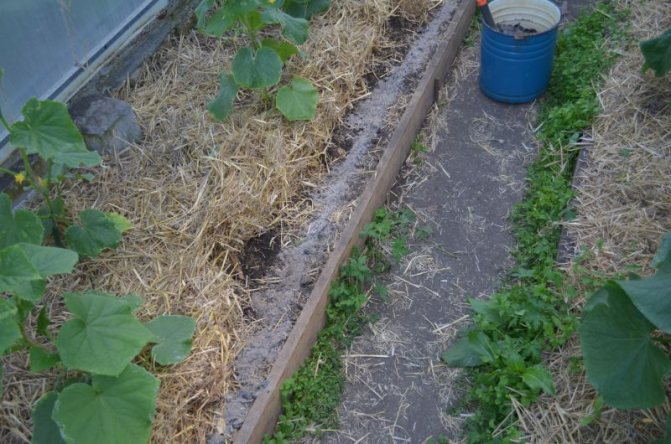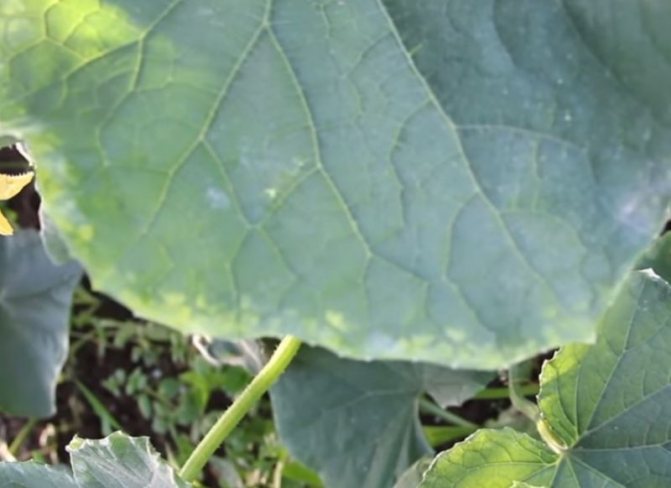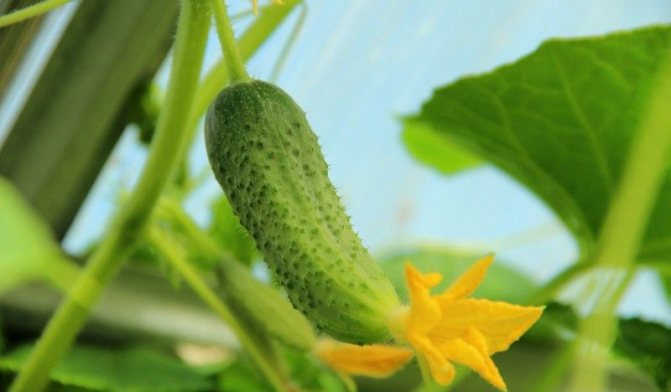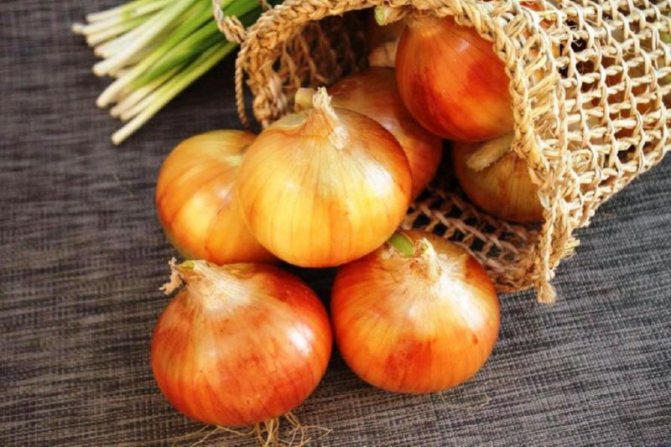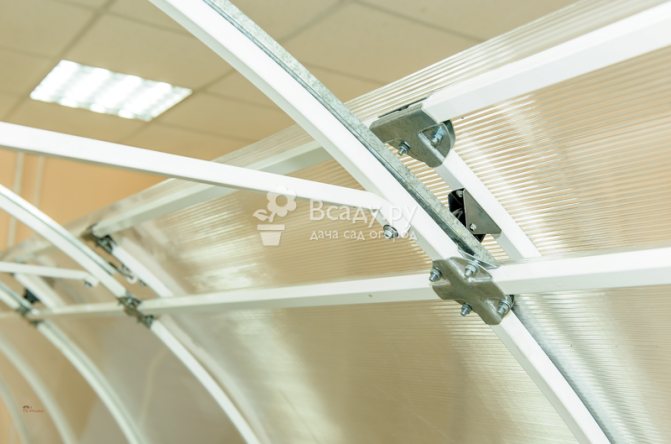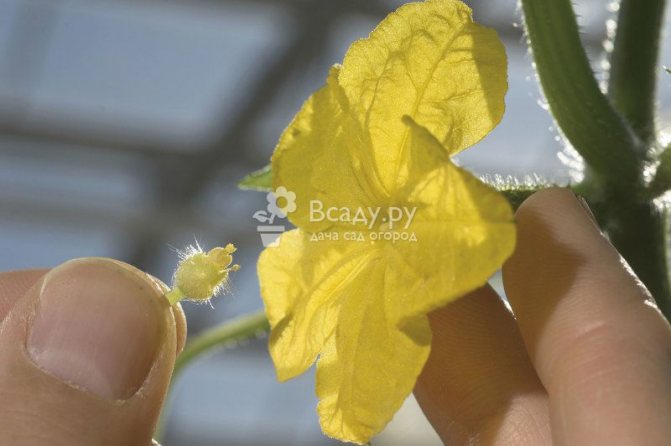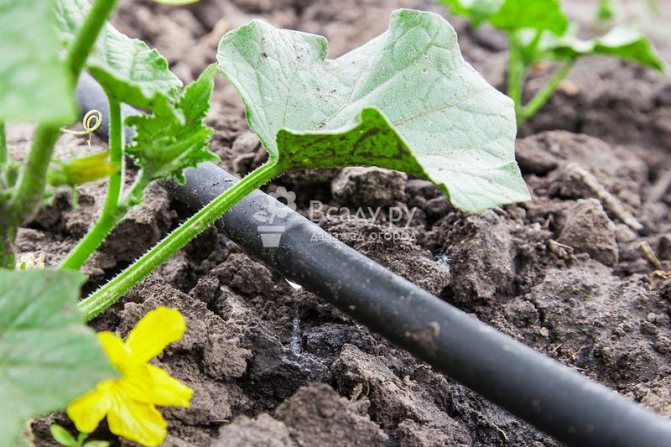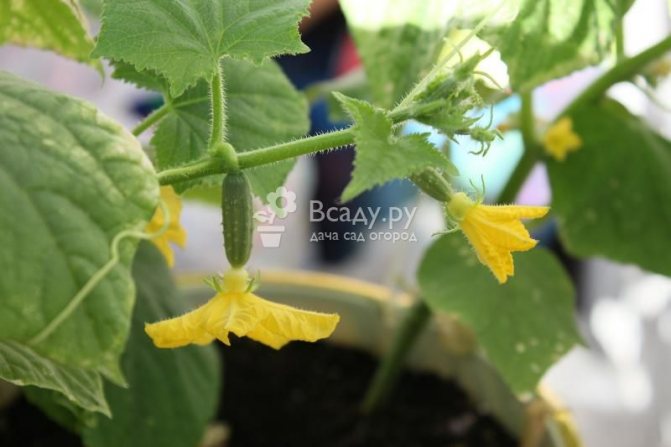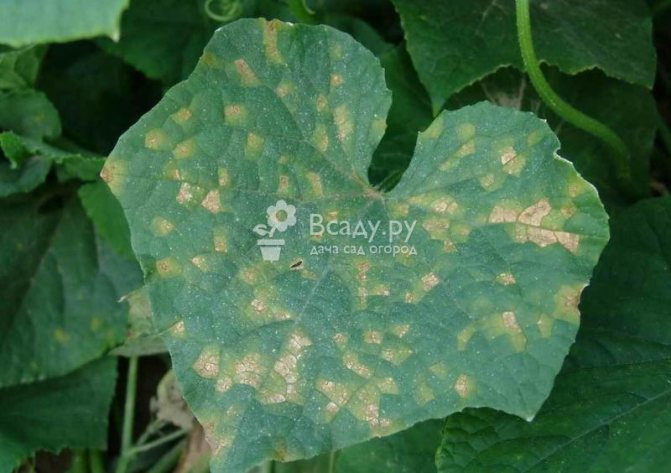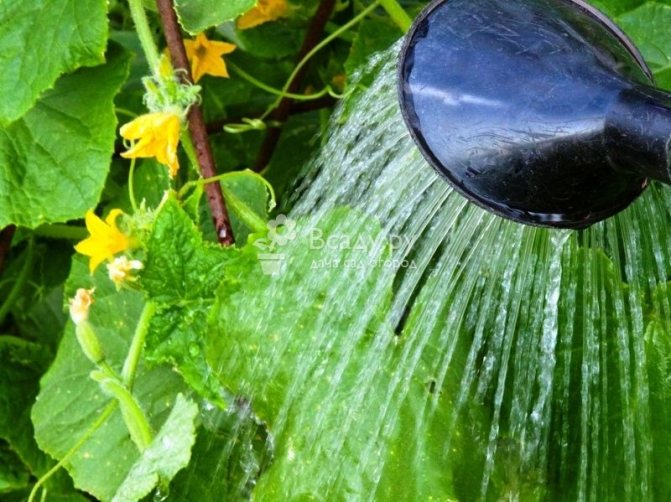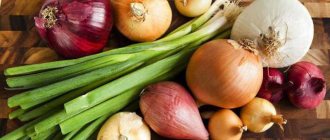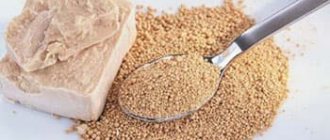When grown, cucumbers love warmth, light and moisture. Watering is of great importance to them. With insufficient moisture, the plant withers, its growth stops, the ovaries may fall off. However, an excess of supplied water also affects the culture negatively - aeration of the root system decreases, root hairs and young shoots begin to die off, stems rot, as well as deformation of fruits. It is necessary to draw up the correct watering schedule. In some periods of development, cucumbers require less moisture, and in others more.
Features of feeding cucumbers in the greenhouse
It is not recommended to use fertilizers when planting plants in the greenhouse. Under the shelter, the dosage of the substances is required to be observed most accurately. As a rule, in greenhouses, greenhouses, food is needed less than in open ground.
How to understand what is missing in cucumbers?
Cucumber bushes can suffer from nutritional deficiencies as well as excess ones.
If the fruits taste bitter, turn yellow, rot, the bush grows poorly, the ovaries fall off, this may be due to a lack of calcium. It is recommended to use recipes with the addition of eggshells or 0.2% calcium nitrate.
A sign of nitrogen starvation is the pale color of leaves and fruits. They may sharpen at the end. Plants can be helped with a mullein.
The lack of potassium is manifested by the curved shape of the cucumbers (they take the form of a hook). As a treatment, you can use recipes using wood ash.
With a lack of phosphorus, the leaves of the bushes may turn yellow. It is worth feeding them with a superphosphate solution.
How to harvest and store crops correctly
Do not overload the bush, you should collect the fruits twice a week. During the period of active fruiting, it is advisable to harvest the crop daily. It is better to do this in the morning, when the fruits are still saturated with moisture.
Unfortunately, the fruits are stored for a short time, so they are canned for the winter. There are several ways to keep them fresh for 2-3 weeks:
- store fruits in a plastic bag;
- remove the cucumbers together with the stalks and place them in a container with water (stalk down);
- lubricate the fruit with egg white for the storage period.
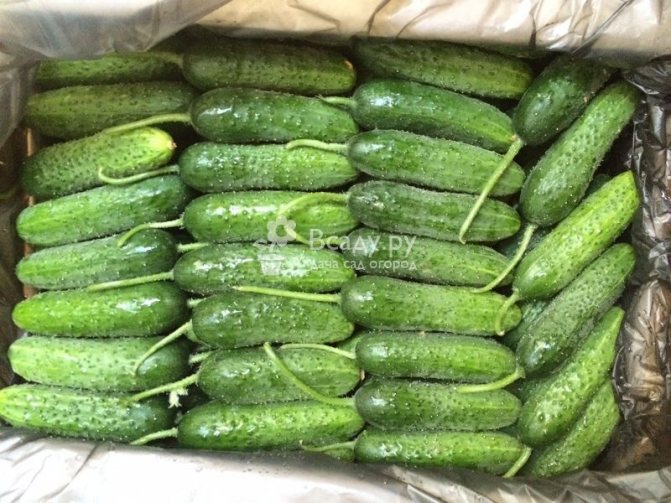
Temporary storage of fresh cucumber harvest
It is not recommended to store them in the refrigerator, since the temperature is below +10 degrees. Celsius is destructive for the greenhouses. The fruit becomes covered with dark spots and mucus, and is the beginning of the decay process.
General feeding rules
All fertilizers are applied to pre-moistened soil. Cucumbers absorb aqueous solutions better, so you need to give preference to them. It is better to under-feed the bushes than to add an excess amount of substances to the soil. Such errors in care can affect the taste of the fruit. The frequency of procedures should not exceed 1 time in 2 weeks.


It is recommended to feed 1-2 bushes first. If the cucumbers respond well, the procedure can be applied to other plants as well.
For these vegetables, you cannot use preparations containing nitrate nitrogen, chlorine. Experts do not recommend using ammonium nitrate to fertilize cucumbers. This substance can cause high nitrate levels.
Preparing the ground in a greenhouse for cucumbers before planting
Before sowing cucumbers or planting seedlings, the soil must be prepared. A few days before disembarkation, it is covered with a film to warm it up. Before that, the soil is disinfected. For example, it is watered with a solution of potassium permanganate (1-3 g per bucket of water). Sulfur bombs are also kindled in the greenhouse.
To enrich the soil with nutrients, during the digging of the earth, fertilizers are applied to it. It can be both minerals and organics. You can use the following fertilizers:
- superphosphate - 20-30 g;
- urea - 10-30 g;
- potassium sulfate - 20 g.
Organic farming advocates can benefit from:
- bird droppings;
- horse, cow dung;
- compost.
Spring fertilizers should contain a large amount of nitrogen.
Autumn preparation of the soil for cucumbers involves:
- greenhouse processing;
- digging the earth;
- fertilization.
It is recommended at the end of the season to rinse all parts of the shelter with a solution of 300 g of lime and 1 bucket of water. When digging the earth, add 1 bucket of humus to it for every 1 m2.
Homemade systems
There are two options for such systems:
- Water is supplied by gravity.
- Water is supplied from the main water supply system or pumping station.
Let us consider in more detail the features of both drip irrigation methods.
Water is supplied by gravity
To organize a drip system in which water is supplied by gravity, you will need:
- barrel, canister or any other container for water;
- stand or base on which the container will be installed;
- tap with a valve;
- pre-punched hose or drip tape.
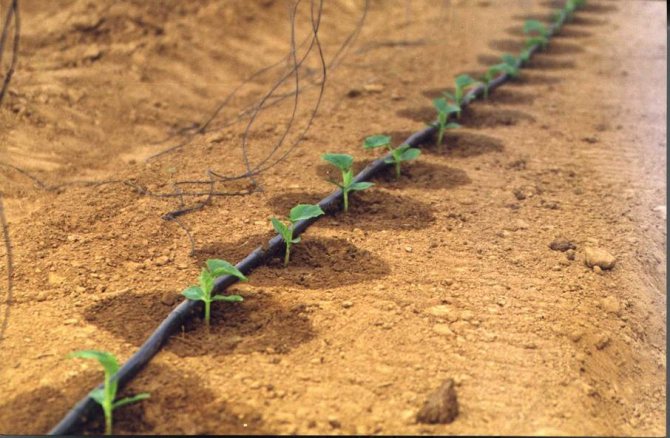

Drip system
So, in order to build a system you need to:
- Build a pedestal or platform, the height of which can be adjusted. This is necessary in order to ensure the required level of pressure for the water supply.
- Lift the water container onto the platform and secure it in a stable position.
- Install a tap in a barrel or canister with a valve at a distance 8-10 cm from the bottom... This installation height prevents sediment and impurities from entering the system from the bottom of the barrel.
- Connect pre-prepared hoses with holes made in them to a tap with a valve. The universal distance between the holes in the hose is the pitch at 30 cm.
- Lay the hoses along the ridges.
Advice: those who have already used this method recommend, before planting cucumber seedlings in the ground, pouring water through the laid hoses. Only after that, start planting cucumber seedlings, planting them in areas moistened during watering.
Water supply from the main water supply system or through a pumping station
It is possible to connect hoses prepared for drip irrigation to the main water supply, but in this case it is necessary to install a pressure regulator that will limit the amount of water supplied within 1 atmosphere. It should only be borne in mind that the water from the water supply, as a rule, is cold, and cucumbers may not like it.
You can also connect a do-it-yourself drip irrigation system to a pumping station.
The main function of such stations is to maintain a given pressure in the system. Thus, by installing the station next to a water source, which can be interconnected barrels, cisterns, pools and any other containers of sufficient volume. The station can be connected to the tank by a suction hose with a filter and a non-return valve, or by a stationary pipe.
If the tap is open, the pressure drops, and the pump automatically turns on, supplying water from the tank to the system. Water drips from hoses and tapes of drip irrigation rather slowly, because of this, the pump will periodically turn on and off.Thus, the pumping station can be closed in any room and work automatically when you are not in the garden.
Mineral fertilizers
For feeding cucumbers, various types of mineral fertilizers are used. The main criterion for their selection is the presence or absence of NO3 and Cl. Some sources claim that preparations with the presence of these substances for cucumbers should not be used.
The most famous mineral fertilizers used for cucumber bushes:
- superphosphate;
- nitrophoska;
- urea.
Superphosphate is used to feed the bushes with phosphorus. It can be applied both to the soil in dry form and used to prepare a solution (20 g / 10 l). It is recommended to add it to the soil when digging in the fall.
Nitrofoska is a complex fertilizer that contains 3 main vital components - nitrogen, phosphorus, potassium, as well as trace elements.
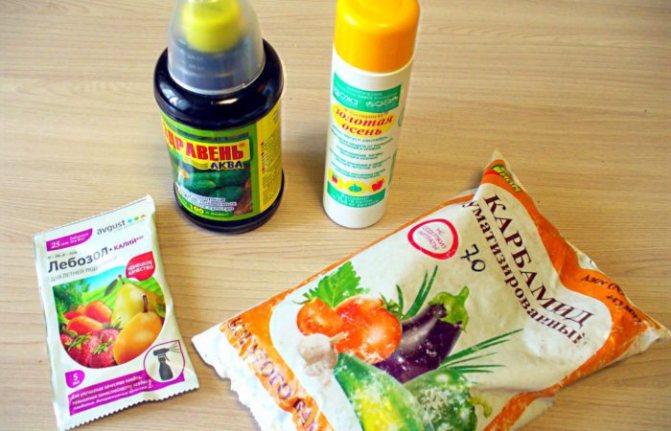

In dry form, it is brought underground to a depth of 8 cm. To prepare a solution, 40 g of granules are dissolved in a bucket of water. Each plant requires 300-500 ml of liquid.
Urea (carbamide) is a mineral fertilizer with a large amount of nitrogen. It can be applied or watered at the root, used for leaf feeding. It is recommended to embed it in the ground only in spring (5–10 g per 1 m2). However, it works better as a solution - 20–30 g / 10 L at the root, 50 g / 10 L on the sheet.
Caring for cucumbers after watering
After watering, it is recommended to carry out some simple manipulations, which will also help to achieve a good harvest of cucumbers.
After each application of moisture and rain, it is necessary to loosen the soil in the garden bed around the plant. The exercise prevents the formation of an earthen crust and improves the air permeability of the soil, due to which oxygen is better supplied to the root system of the plant. Loosening is carried out to a depth of 3-5 centimeters, it is convenient to do it with a rake.
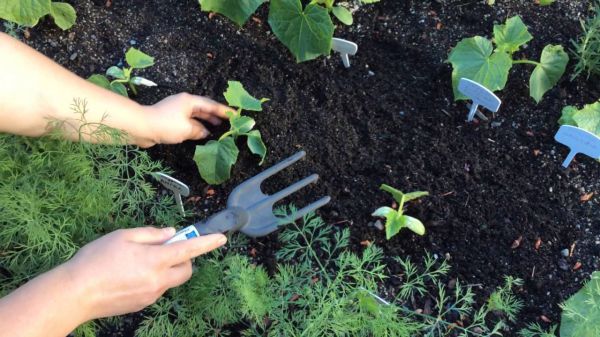

If you don't want to loosen every time, you can spread mulch around the cucumbers. Mulching keeps soil moisture longer. For example, you can use straw or hay.


Organic fertilizers for the growth of cucumbers
Organics are the best option for growing cucumbers. It is better absorbed by plants and makes it possible to grow healthy foods. The most common recipes for mixtures of mullein and bird droppings.
To prepare the solution, rotted droppings are diluted in a ratio of 1:10, fresh - 1:20. At the end of the season, add when digging. Watered at the root.
Cow dung is also used in a fresh, rotted, semi-rotted form. Fresh manure can only be used in the fall when digging. For watering, you can prepare a mixture of 1 liter of mullein and 2 liters of water. The resulting mass is kept for 1 week. Then, for application under the bushes, dilute with 500 ml with 1 bucket of water.
In the video, the author tells in detail how greenhouse cucumbers can be fed with fertilizer from chicken manure.
Folk remedies
To increase the fruiting of cucumbers, there are time-tested folk remedies for feeding. The most famous of them:
- Onion peel decoction. 150-200 g of onion husks are poured into a ten-liter saucepan. Bring to a boil. The cooled broth is poured over the plants. For one bush you need 1 liter of natural fertilizer.
- Braga from yeast. 1 pack of live yeast is diluted in 10 liters of water. Leave to ferment for 24 hours. Water at the root of 1 liter per plant.
- Poultry manure solution. 1 liter of fresh chicken manure is bred in 2 buckets of water. The solution is poured over the areas between the rows.
- Ash mixture. 2-2.5 st. wood ash is added to 10 liters of water. 1 liter of liquid is added under one bush.
- Iodine solution. 30 drops of iodine are dripped into a bucket of water. Pour 1 liter of milk. The soil is sprayed every 1.5 weeks.


Tips for experienced summer residents
To get a good harvest and avoid common mistakes, you should follow the rules for watering cucumbers. Experienced summer residents can tell you how best to irrigate a vegetable crop:
- To prevent the cucumbers from being bitter, observe the regularity of watering. Do not let the soil dry out. The water should be warm. Combine with watering top dressing.
- White bloom on the soil surface indicates that the frequency of watering and the volume of water should be reduced.
- In hot weather, you can cool the greenhouse structure with a regular chalk solution. They irrigate the walls of the greenhouse.
- Do not water plants directly at the root. Thus, the soil is eroded. Moisture stagnates at the roots and mold appears. Vegetables are watered in grooves near the plant, which are dug out from each bush.
- A regular bottle is suitable for drip irrigation. Several holes are made in the lid, the bottom of the container is cut off, and the neck is set in the ground next to the plant. Each of the bushes should have its own capacity. The bottle is then filled with water. Through the holes, the liquid enters the roots of the vegetable crop.
- If the plant is sick with a fungal infection, the sprinkling method is excluded. Use a watering can or drip.
- Iodine and urea will protect plants from infections. Add them to the liquid when watering vegetables.
Types of dressings
Nutrients for cucumbers are brought in:
- under the root;
- according to the sheet.
At the beginning or end of the season, fertilizers are placed in the soil for future cucumber bushes during digging.
Root
For root dressing, minerals and organic fertilizers are used. In stores, there are complex preparations designed specifically for this culture. Also, we must not forget about the "old-fashioned" natural recipes.
Foliar
Foliar dressing is carried out by spraying the leaves. It is convenient to do this with a spray bottle. The essence of the procedure is that the leaves of the cucumbers should be covered with small drops of a useful mixture.
Bushes are fed in the evening or early in the morning. Solution options:
- 10 g urea / 10 l water;
- 1 tsp boric acid / 10 crystals of potassium permanganate / 1 l of water;
- 100 g ash / 10 l water.
Foliar dressing is an additional food and cannot completely replace fertilizers applied at the root.
Do I need to spray over the leaves
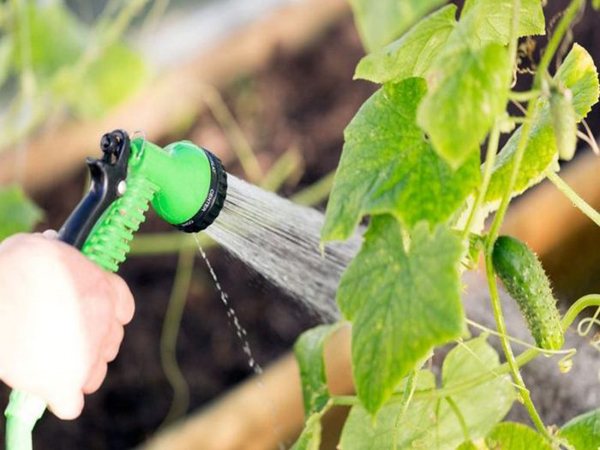

The cellular structure of polycarbonate protects the cucumbers inside the greenhouse from overheating, however, in the heat, the air inside can heat up quite strongly. Cucumbers like sprinkling over the leaves. The culture especially needs this method of humidification in warm and hot weather.
If the sun is beating down strongly, it is impossible to spray, on such days it should be done in the morning or in the evening. In cloudy weather, you can not look at the clock and moisten the leaves at any time of the day. The main thing is that they have time to dry before nightfall. This technique is not used in cool or rainy weather, when the air humidity is already high enough.
Advice! Spraying on leaves can be combined with foliar feeding or pest control.
Forming cucumbers in a polycarbonate greenhouse
The scheme of feeding cucumbers in the greenhouse
Greenhouse plants are fed according to the scheme up to 4-5 times. The number of procedures depends on the condition of the soil and the plants themselves. If the plants have succulent leaves, they grow well, form flowers, bear fruit well, the number of procedures should be reduced. Excess fertilizers can not only negatively affect the condition of the bushes, but also affect human health.
Top dressing of seedlings
The first dressing for cucumbers is made during the seedling period. At this time, the plants should form strong roots, the aerial part. Like all plant species, they most of all need NPK - a complex (nitrogen, phosphorus, potassium). You can, following the instructions, use complex preparations for seedlings.
Fertilizer after transplant
If fertilizers were not introduced into the soil during planting, the seedlings are fed 2 weeks after transplanting to a permanent place of growth. To do this, you can prepare a solution from:
- 1 bucket of water
- 15 g of urea and potassium chloride;
- 20-25 g of double superphosphate;
- 15-20 g of potassium sulfate.
The solution is poured under the root. It is enough for feeding 10-15 bushes.
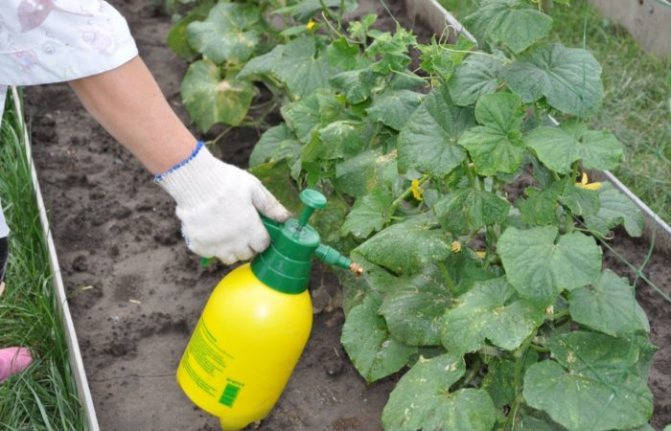

Top dressing of bushes during flowering
Plants begin to bloom about 2-3 weeks after transplanting the seedlings. The next feeding should be at this time. It is recommended to use organic substances during this flowering period.
- Recipe number 1.
In 1 bucket of water, 500 ml of cow dung is diluted, 1 tbsp. l. nitrophosphate. Add 100 g of wood ash, 0.5 g of boric acid, 50 g of potassium sulfate, 0.3 g of manganese sulfate.
- Recipe number 2.
1 liter of chicken manure is added to 15 liters of water. Fall asleep in a solution of 150 g of ash. Watered under the bushes.
To water 1 m2 of a plot, you need 3 liters of liquid.
If the gardener decides to add minerals, you can use ammophos, azofos (1 tbsp. L / 10 l of water).
What to do if cucumber bushes grow poorly?
The slowdown in growth may be due to a lack of nutrients. If the lack of a particular substance could not be recognized, you can feed the plants with complex preparations. At first, it is recommended to try it on a few bushes. If a few days after watering there are positive changes, the procedure can be performed for other plants.
Fertilizers during fruiting
During fruiting, you can use the same recipes as during the budding period. There are other feeding options:
- urea - 5 tbsp. l. / 10 l of water;
- cow dung - 1 l / 5 l;
- potassium nitrate - 1-1.5 tbsp. l. / 10 l;
- ash - 1 l / 5 l.
7–8 liters of solution can be watered on 1 m2 of the garden.
How to feed cucumbers in a greenhouse in winter?
Winter plants are fed every 2 weeks, alternating mineral and organic matter. Fertilizers in winter can be used the same as in spring: mullein, bird droppings, wood ash, complex preparations, etc.
Why is the temperature required?
Observance of the correct temperature regime will provide the cucumbers with comfortable conditions for quick and successful ripening. Keep in mind that growing cucumbers is best done in a heated greenhouse.
During the day, the temperature should be maintained at +20 ° С and approximately + 17 ... + 18 ° С at night. This regime must be maintained until the fruiting period begins.
Further, the vegetables will need even more heat, and if by that time it is not hot enough outside, you should continue to heat them yourself. If it is cloudy outside, it means that the temperature in the greenhouse should range from +21 to +23 ° С, and in sunny weather - + 24 ... + 28 ° С. Plants can be heated at night not so intensively, it is enough to maintain + 18… + 20 ° С inside the greenhouse.



